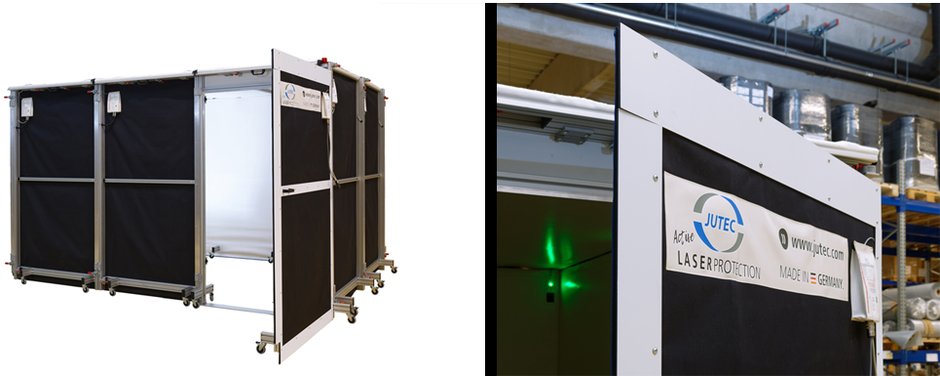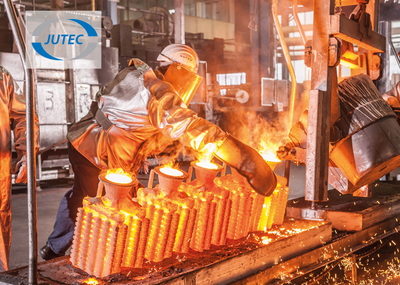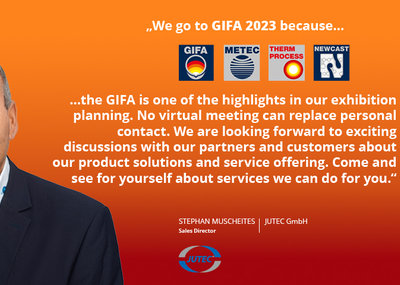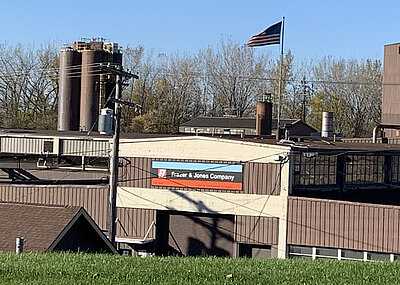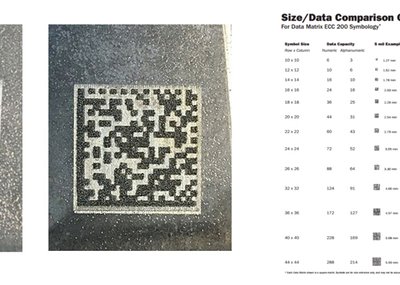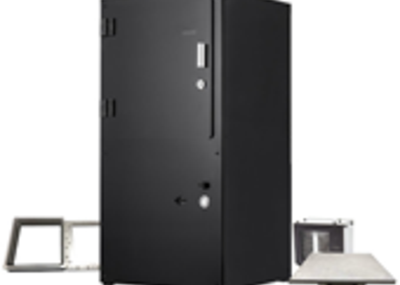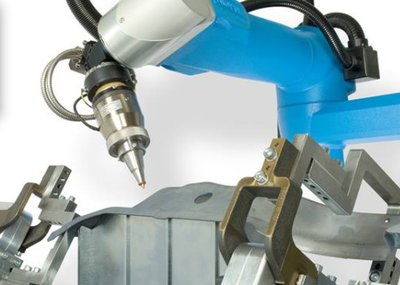Nowadays, high-power laser sources with high beam quality are no longer a rarity, even in smaller production facilities. However, they require active laser protection measures, which are often costly and offer little flexibility. With the flexibility of a welding curtain and the functionality of encapsulated laser systems, active laser protection textiles pave the way for laser technology to open up new applications in the future.
Need for protective devices
In today's production technology, the laser as a beam tool is used in many completely different ways. Thanks to the flexible use of lasers in metrology and material processing and in view of the advancing development of ever more powerful beam sources, many innovative applications can be opened up. Due to the ever-increasing national and international competition in the manufacturing industry, small and medium-sized production companies must now also use laser-based processes in order to remain competitive.
Keyword enclosure
A common limitation to the direct use of laser technology that every user and company has to deal with is the need for safety equipment. Personal injury must be prevented in a safe manner, which is why laser systems are also subject to strict regulations. For this reason, automated laser systems in particular are usually enclosed today. A distinction must be made between passive and active laser protection. Passive laser protection for automated systems means that the enclosure of the laser processing station must withstand the radiation for a defined time of 30,000 seconds (approx. 8.3 hours). This time is specified in the DIN EN 60825-4 standard applicable to the safety of laser systems. This assumes direct irradiation of the enclosure, i.e. the greatest possible acceptable accident. In the case of today's widespread high-brilliance beam sources, which have become indispensable e.g. in the automotive industry for welding, cutting and soldering applications, passive laser protection is already hardly possible today. The enclosure would have to be far away from the beam source in order to attenuate the beam intensity far enough to withstand direct irradiation for the required duration. A passive enclosure would simply take up too much space. A workaround would be to limit the maximum duty cycle of the laser.
A workaround would be to limit the maximum duty cycle of the laser to 10s or less, but this would considerably restrict the flexibility of the laser system and its applications in the long term. Alternatively, active laser protection walls are used. To date, these have generally been double-walled and have sensors inside, usually diodes, which open the safety circuit of the laser in the event of damage and thus interrupt the emission of radiation.
Laser safety even away from mature production lines
Enclosures with active laser safety barriers are very well suited for fully automated production lines and processes in which large quantities are produced. It is more difficult, however, with flexibly convertible processing and measuring stations, or even mobile or field installations. However, such "laser-on-demand applications" are also becoming increasingly available today. The answer lies in a flexible and easily adaptable active laser protection textile, similar to a welder's curtain, for the respective station or the assembly or measuring site. Exactly this solution is now available after several years of research and "Made in Germany".
The functional principle
JUTEC GmbH, based in Rastede, Germany, has introduced an active laser protection textile to the market for the first time and has already had it successfully certified. The new active and modular laser protection system consists of an active sensor textile (A) and a measuring amplifier (B). As soon as the sensor textile is damaged by the laser, its physical properties change, whereupon a switch-off command is given to the beam source via the measuring amplifier or the safety circuit of the laser is opened and the radiation emission is stopped. In addition, the active laser protection textile has passive radiation protection layers (C) which, on the one hand, reliably withstand low-intensity radiation and, on the other hand, compensate for the signal propagation time or radiation duration between the switch-off command and the absence of laser radiation. All in all, the laser protection textile is only about 10 mm thick. The structure and functional principle of the laser protection textile are schematically illustrated.
Within the scope of the certification, the suitability of the laser protection textile for active laser protection could be proven completely and reproducibly. Incident radiation was reliably detected by the sensor textile and the beam source was switched off before the rear textile layer was destroyed and radiation was transmitted. The result of a radiation test with a laser power of 12 kW and a beam diameter of 17 mm on the laser protection textile is shown as an example in Figure 2. The picture shows the burnt front side of the textile and its opposite undamaged back side.
Easy to integrate and expand
The certification of the active laser protection textiles of JUTEC GmbH not only impressively proved their function, but also showed how easily they can be integrated into existing safety circuits and how existing laser systems can be expanded with them. The fact that the developers have done a great job is also evident from the fact that the measuring amplifier is certified by TÜV according to EN ISO 13849-1 for functional safety and achieves Performance Level "e", which stands for particularly high safety. For laser users, the use of this innovative safety concept opens up completely new application possibilities in the field of laser technology. The focus is also on personal protective equipment, which can open up completely new applications. It is to be expected with excitement in which new applications and areas high-power lasers will be used in the future thanks to active laser protection that is much easier to implement.
Active laser protection in use
The active laser protection of JUTEC GmbH represents a technology that can be used in very different applications and can thus offer the customer great flexibility. On the one hand, active laser protection is used for the active protection of fully automatic laser machines. JUTEC is already involved in the design phase of the system so that the integration of active laser protection is as simple as possible. Figure (LSK) shows an example of an application using a CAD illustration: The active laser protection protects the free steel in the upper area of a production plant. If the system were to have an accident without active laser protection, e.g. breakage of a mirror, the laser beam would destroy the housing of the system and then escape unhindered into the open.
The active laser protection ensures that the laser stops the beam emission immediately after firing.
Active laser protection in use
Two major advantages, in addition to the mechanical flexibility of the active laser protection system, are the low weight and the great freedom of design in terms of geometry. The unique combination of these advantages enables the production of active laser protection walls. JUTEC GmbH manufactures active laser protection walls that are movable and mobile. The active laser safety barriers can be connected by means of quick-release fasteners. Together with the corner modules, a fully enclosed active laser protection cabin can be erected in less than an hour. The standard module width of the laser safety barriers is 1300 mm with a height of 2500 mm. The best-selling cabins are 3 x 2 and 3 x 3 modules, i.e. an internal dimension of approximately 2.6 x 3.9 m², or 3.9 x 3.9 m².
Simply upgrade an existing system
Fully or partially automated laser processing systems generate high investment costs. While the costs for laser beam sources have decreased significantly in recent years (in relation to the available power), the costs for the supporting mechanics (linear axes, control) have decreased comparatively little. So if the application of the laser processing system changes, for example the material to be welded is changed from steel to copper in the context of electromobility, only a higher laser power is actually required. Since existing systems are usually not designed for higher laser powers, until now the only option has often been to purchase a new system. This has changed significantly thanks to the active laser protection system from JUTEC. The active laser protection system from JUTEC is used within the framework of RetroFit to equip areas that are particularly at risk due to high laser power. The advantages for the customer are obvious: In addition to the lower costs compared to the procurement of a new system, retrofitting with JUTEC active laser protection is usually carried out in a few hours, so that hardly any machine downtime is recorded. Another advantage: the machine operators do not need to get used to a new system.

